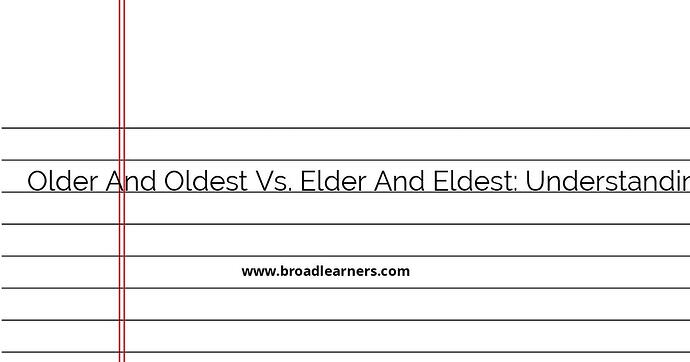When it comes to comparing age or seniority, the words 'older,' 'oldest,' 'elder,' and 'eldest' are commonly used. However, they are not interchangeable and have specific meanings and contexts in which they are used.
- Older and Oldest:
-
'Older' and 'oldest' are comparative and superlative forms of the adjective 'old.' They are used to compare the ages of two or more people or things.
- Older: Used to indicate someone or something of greater age in comparison to another. For example, 'She is older than her brother.'
- Oldest: Used to indicate the person or thing of greatest age in a group. For example, 'She is the oldest in the family.'
Here are some examples:
- Mary is older than Tom.
- He is the oldest person in the room.
- Elder and Eldest:
-
'Elder' and 'eldest' are terms used to indicate seniority or familial relationships, typically within the same family.
- Elder: Refers to a person of greater age or seniority within a family or social group. For example, 'My elder brother is a doctor.'
- Eldest: Refers to the person who was born first or before the others in a family. For example, 'She is the eldest daughter.'
Here are some examples:
- John is my elder brother.
- She is the eldest in the family.
It is essential to use these terms correctly to convey the intended meaning and avoid confusion. Whether you are comparing ages or indicating seniority within a family, understanding the differences between 'older,' 'oldest,' 'elder,' and 'eldest' will help you use them appropriately in various contexts.
Did I miss anything? Respond below
